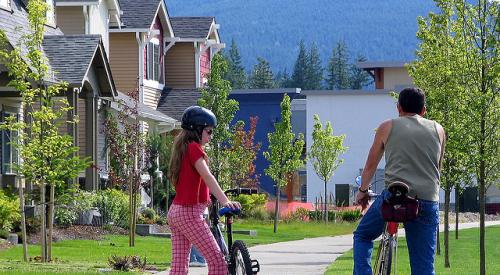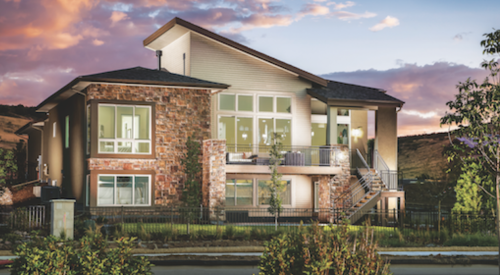Forty-seven percent of Americans agree that where they live is more important than the home itself, compared with 20 percent who disagree, according to a survey of 10,000 households by the Demand Institute, a non-advocacy, non-profit group jointly operated by the Conference Board and Nielsen. A safer neighborhood was cited as the top reason to move (30 percent), followed by being closer to family, seeking a change of climate, moving closer to work, and moving to start a new job.
“When we talk about building new homes and new developments, greater safety is often associated with suburban living,” says Jeremy Burbank, vice president of the Demand Institute. “I think that will be a key selling point for builders and also an opportunity for them as they make those communities for people and think about making them more safe.”
Fifty-nine percent of movers said that they will stay within 30 miles of their current homes, while 26 percent will go out of state. The number of out-of-state movers is down
30 percent since 2000 due partly to structural changes in labor markets and prolonged economic weakness across the country. Among out-of-state movers, 55 percent want a change of climate and 39 percent will move to retire, which is why warm weather states in the West and the South will have a net gain of movers from the Midwest and Northeast.
The country added more than 5 million renter households since before the Great Recession started, which could explain why the population living in urban and suburban areas has grown since 1990. Despite claims that city centers will attract professionals who want to live near work and walkable amenities, the Demand Institute poll shows that 73 percent of movers intend to move farther from the city in search of bigger, more affordable homes and safer neighborhoods.
“Some city centers have done well during the past few years,” Burbank says, “and we expect the demand for city living to be robust, but we don’t expect it to come at the cost of the suburbs.”
Other characteristics, such as being in a good school district or a diverse neighborhood, and proximity to public transportation and amenities, vary in importance depending on such factors as whether the household has school-age children, has someone who wants to be close to a job, and so on. Almost half of those surveyed reported walking to places within their community at least once a month. Most Americans are OK with driving a short distance to destinations such as grocery stores, restaurants, parks, health-care providers, and public transportation, but they want to be within walking distance of one or two of these places. However, they would not opt for those benefits by living in a densely populated area.
“Compared with 20 to 30 years ago, we have far more single-person households who do buy homes, far more empty nests for older couples, and we also have more dual-worker households,” Burbank says. “Oftentimes these are busier people who aren’t going to want to take more time to get from point A to point B. Also, people who aren’t tethered to a home because they don’t have children have more time to spend being out and about and away from the home, and we see they are demanding more walkability.” PB













